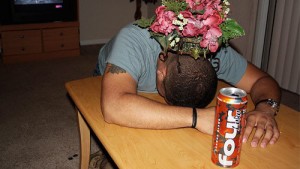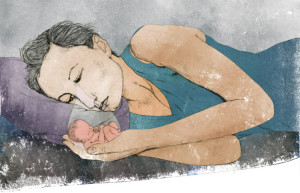“La Vida Loko — What Took So Long?”
 Word in today’s New York Times that the FDA is ready to take a stand on alcohol-laced caffeinated energy drinks offers a good opportunity to consider the impact of media attention on health policy.
Word in today’s New York Times that the FDA is ready to take a stand on alcohol-laced caffeinated energy drinks offers a good opportunity to consider the impact of media attention on health policy.
Media outlets have been full of stories for months about young people becoming seriously ill or even dying after ingesting the drinks. Most reports have centered on Four Loko, a fruit-flavored malt beverage with 12% alcohol content and caffeine equal of a cup of coffee. It’s known on some college campuses, “Coma in a Can.”
The FDA, which has never approved adding caffeine to alcoholic beverages, has been reviewing whether alcohol-caffeine energy drinks are safe and legal. The review began about a year ago at the urging of 18 state attorneys general.
Four Loko’s manufacturer “has said that drinking premixed alcohol and caffeine is no different from drinking a few glasses of wine with dinner and having coffee afterward,” notes the Times. The company, whose product had been widely available in the US, says it takes steps to prevent its products from getting into the hands of minors and complains that Four Loko is being targeted unfairly.
But the drumbeat of media reports has spurred state action ahead of an FDA ruling. Several states have banned the drinks; New York’s governor says his state will as well, and that state’s main beer distributors have agreed to stop delivering caffeinated alcoholic beverages to retailers.
 Word in today’s New York Times that the FDA is ready to take a stand on alcohol-laced caffeinated energy drinks offers a good opportunity to consider the impact of media attention on health policy.
Word in today’s New York Times that the FDA is ready to take a stand on alcohol-laced caffeinated energy drinks offers a good opportunity to consider the impact of media attention on health policy.
Media outlets have been full of stories for months about young people becoming seriously ill or even dying after ingesting the drinks. Most reports have centered on Four Loko, a fruit-flavored malt beverage with 12% alcohol content and caffeine equal of a cup of coffee. It’s known on some college campuses, “Coma in a Can.”
The FDA, which has never approved adding caffeine to alcoholic beverages, has been reviewing whether alcohol-caffeine energy drinks are safe and legal. The review began about a year ago at the urging of 18 state attorneys general.
Four Loko’s manufacturer “has said that drinking premixed alcohol and caffeine is no different from drinking a few glasses of wine with dinner and having coffee afterward,” notes the Times. The company, whose product had been widely available in the US, says it takes steps to prevent its products from getting into the hands of minors and complains that Four Loko is being targeted unfairly.
But the drumbeat of media reports has spurred state action ahead of an FDA ruling. Several states have banned the drinks; New York’s governor says his state will as well, and that state’s main beer distributors have agreed to stop delivering caffeinated alcoholic beverages to retailers.





